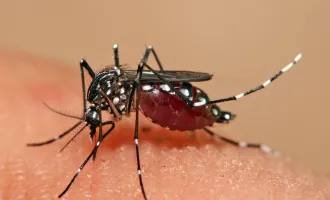It Takes Two: Academia and the Drug Industry (Part III)
The number of new drugs approved by the U.S. Food and Drug Administration per billion dollars spent by the drug industry on research and development has halved approximately every nine years since 1950* (Scannell et al., 2013).
Put another way, the cost of bringing a drug to market is soaring: Larger pharmaceuticals now spend at least $5 billion per chemical entity (Herper, 2013). Such low rates of return on investment have caused companies to drastically cut their own R&D departments and seek creative ways to bolster the efficiency of drug candidate development.
One strategy that is gaining momentum is partnerships with academic medical centers.
The Bay Area chapter of Oxbridge Biotech Roundtable (OBR-Bay) recently invited local bio-entrepreneurship leaders to the University of California San Francisco to participate in a panel discussion of the conditions leading to the increase in academic-industry partnerships, current models for collaboration and projections for the future.
The panel consisted of Jeffrey Bluestone, Executive Vice Chancellor and Provost of UCSF; Corey Goodman, co-founder and Managing Partner of the investment firm venBio; Douglas Crawford, Associate Director of the QB3 Institute for Quantitative Bioscience; and Daria Mochly-Rosen, Director of the SPARK translational science program at Stanford University’s School of Medicine.
The discussion was moderated by OBR-Bay President Nick Mordwinkin.
Hurdles to Overcome
Douglas Crawford notes that faculty now move more freely back and forth between industry and academia, as universities become more welcoming of pharma. However, each side has still has some hang-ups about the other, says Corey Goodman.
Industry scientists may worry that academic investigators don’t respect intellectual property (IP) and won’t keep proprietary information secret. Academics may fear forfeiting IP rights from their discoveries or the chance to publish their work.
However, Bluestone believes that fear of losing IP rights for their discoveries shouldn’t prevent academics from participating in industry collaborations.
Billion-dollar ideas are extraordinarily rare, he says, and drive so much bad behavior. If the ultimate goal is to improve patient outcomes, he argues it is better to do the research first and worry about royalties later.
After all, biomedical research supported by the National Institutes of Health is ultimately funded by public tax dollars, and the public should be the ultimate beneficiary of new discoveries. Goodman notes that the U.S. Patent and Trademark Office has, in any case, significantly narrowed its definition of what is patentable in the life sciences, a trend recently highlighted by the Supreme Court’s judgment to revoke Myriad’s patents of the “breast cancer gene,” BRCA1.
Rather than splitting hairs trying to protect IP, Bluestone suggests that academic investigators protect what they most cherish: The ability to choose the work they want to do, to publish and not to let a project they are passionate about get shelved merely for lack of an obvious profit. By coming to the table as equals, both industry and academic partners can come out with what they most prioritize.
Another serious obstacle to fruitful collaboration between academia and industry is the issue of data reproducibility. To fill their pipeline, the pharmaceutical industry routinely selects candidate drug targets from reports in the scientific literature, which are vetted by in-house validation programs.
However, several recent reports (http://www.nature.com/nrd/journal/v10/n9/full/nrd3439-c1.html) have suggested that published findings from academic labs could only be reproduced 11%-50% of the time in industry labs, irrespective of the tier journal or scientific area (Mobley, 2013; Prinz, 2011).
Besides grave implications for the progress of science itself, this inability to reproduce data may further inflate the cost of drug development by keeping bad targets in the pipeline or designing clinical trials based on either faulty, incomplete or too narrowly applicable data.
There are likely to be many reasons for this irreproducibility, and experts emphasize that scientific fraud is likely to be only a small piece of the picture. Rather, inappropriate statistical analyses, insufficient sample size, negligence of controls or insufficient reporting of experimental conditions are all potential contributors.
Additionally, the biology itself may be subject to experimental conditions not obvious to the experimentalist. Working together, academic and industry scientists should be able to elevate the scientific rigor of basic research and address the issue head on.
Moving Forward Together
In addition to preventing and treating human disease, an infrequently mentioned component of the official NIH mandate (http://www.nih.gov/about/mission.htm) is to promote the economic well-being of the nation. Thus, the suffering of the pharmaceutical industry should be everybody’s concern, says Crawford.
Bluestone also warns against a brain drain, anticipating that stagnation in the drug industry will drive young talent into other fields. Despite some cautionary remarks, however, the panel generally expressed optimism for the future of drug development.
Hitting rock bottom, remarks Mochly-Rosen, may have provided the perfect catalyst for a total system overhaul. While new paradigms for drug development are still under experimentation, it seems now safe to predict that improving patient outcomes in the future will require meaningful cooperation between medical science professionals across industry, academia and beyond.
This is the third article in a three-part series about partnerships between private industry and academia.


